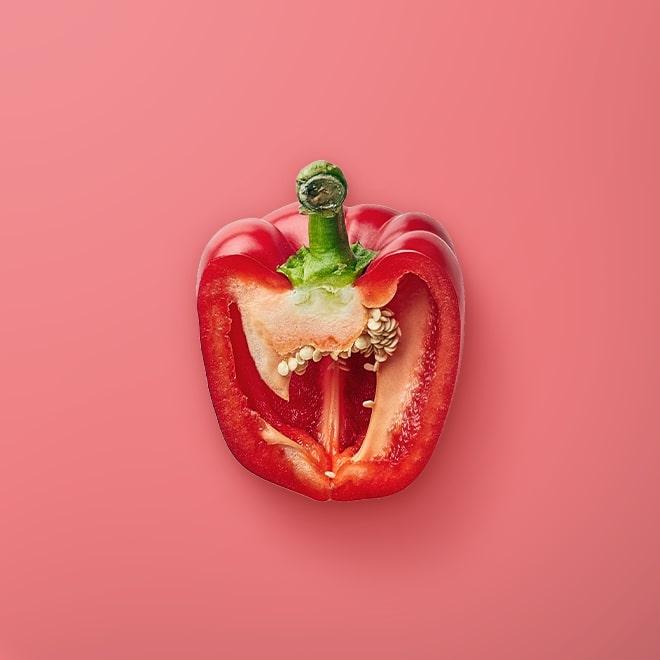Bell Pepper




Crunchy and tangy on the outside, with a sweet and mild juice taste, bell peppers are the most vividly colorful peppers of them all. They range from green, red, yellow, orange, purple, brown, to black. They are naturally called bell peppers for their unique bell shape. The darker the peppers, the more bitter the taste. Yellow, red and orange peppers have a sweeter, almost fruity, flavor.
Bell peppers are eaten raw or cooked and are good in salads, savory dishes, stuffed or eaten on their own.
Choose the peppers that are vivid in color and don’t have wrinkles or dark spots.
They should feel firm and heavy, and the stems should be green.
They should stay fresh for about 10 days in the refrigerator. About 10 days after purchase, they may start to lose their vitamin-C content.
Are different plant varieties responsible for the bell pepper’s many colors? Actually, no! The color is generally a sign of how ripe the pepper is, with green peppers being the least ripe. As they ripen they turn yellow, then orange, and finally red. Their taste and nutritional content varies as the color does.
Before cutting your bell peppers, make sure to wash them thoroughly under cold running water.
You can easily cut your pepper into different sizes. Peppers can be chopped, diced, or cut into strips.
They can be cut into rings or left whole for stuffed pepper recipes.
Roasted bell peppers are tender, smoky, and delicious. They add flavor and texture to a variety of dishes and sauces.
Bell peppers are a high source of Vitamin E with 1.45 mg per cup, and Vitamin C with 117 mg per cup. Bell peppers have more than twice the amount of Vitamin C than oranges.
They also contain more than 30 different carotenoids, which are good for antioxidants and anti-inflammatory health benefits.
Corrections or improvements? Email us at
content@sidechef.com